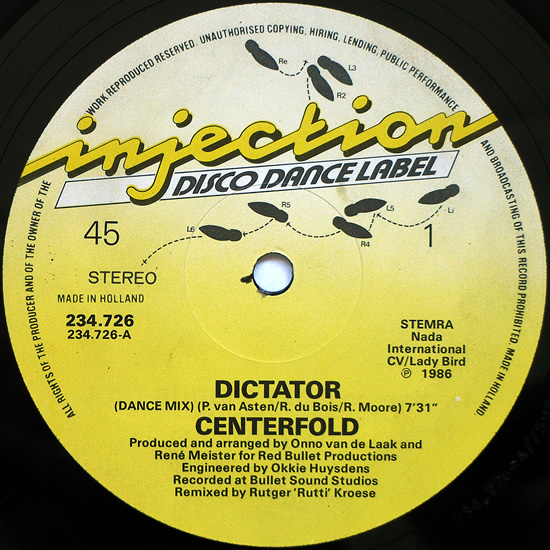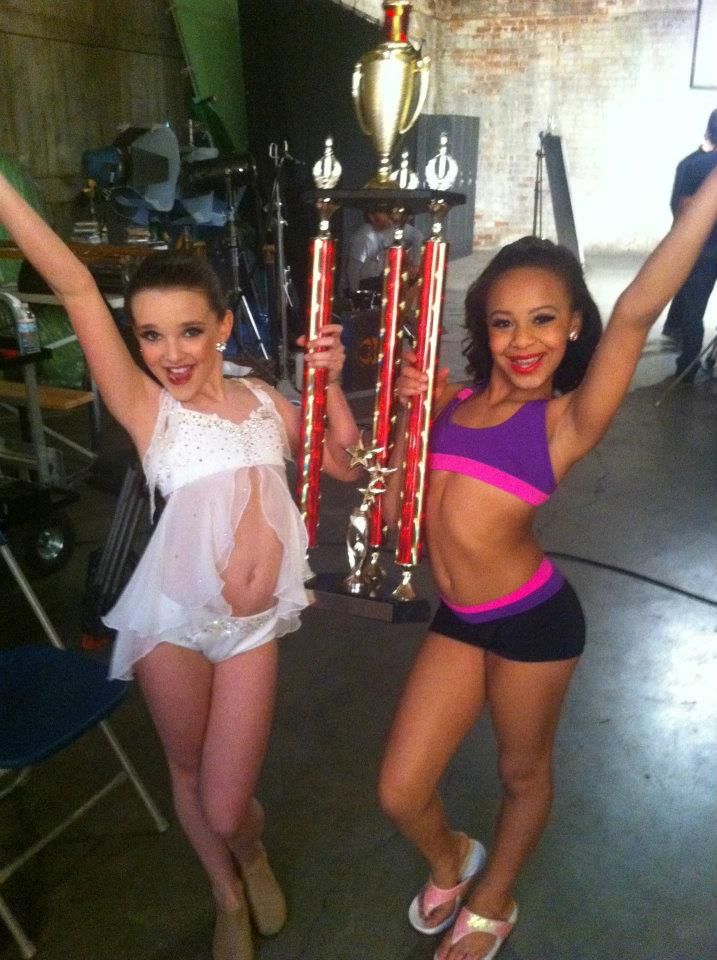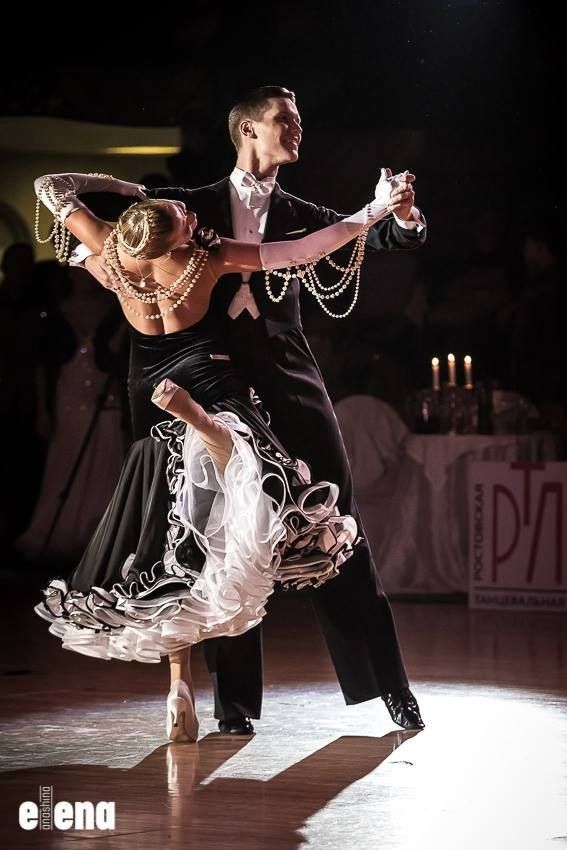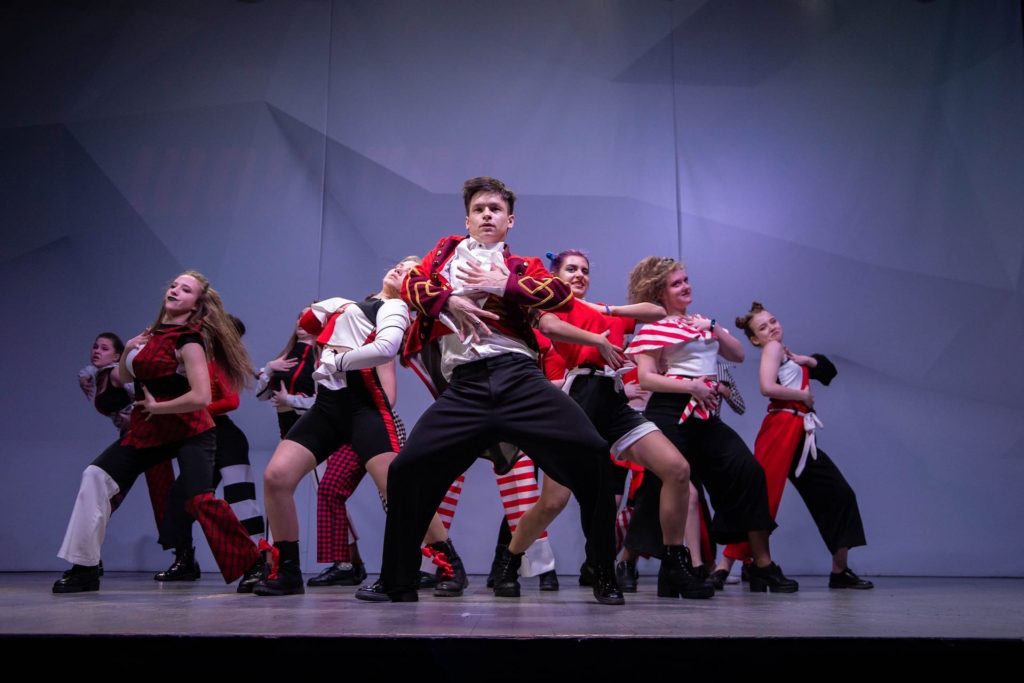How to make a dance remix
21 Helpful Tips for Making Remixes
So you want to remix a song?
Well, there’s good news and bad news.
The bad news is that unless you know the fundamentals of electronic music production, you’re going to have a hard time. The good news is that once you do, making a remix is pretty damn straightforward.
So what if you don’t know the fundamentals?
Well, you’ve come to the right place. In this guide, I’ll cover 21 tips to help you on your way, covering topics like:
- How making a remix/bootleg is different from an original
- Thinking ahead to create remixes faster (instead of wasting time)
- Creative ways to mangle stems (that most producers neglect)
- Incorporating your signature sound into a remix
- Why using fewer stems can help you make better remixes
Whether you’re remixing a song for a competition, have been contracted an official remix for a release, or cooking up a cheeky bootleg of a popular song, these tips are for you. Read on to learn how to remix a song.
Note: If you’re a new producer, I’ve put together a free 50-page remix guide on everything you need to know about remixing. This thing will get you set up with making remixes in no time.
1. Pick the Right Song to RemixPick a song that you think would benefit from a remix. You’re more likely to follow through with the remix if you like the original song.
This is even more important if you’re making a bootleg and don’t have access to any stems; you need to pick a song that leaves room for work to be done.
As great as Iglooghost’s music is, this one would be tough to remix well.
That’s why acoustic/minimal songs are great to remix. Petit Biscuit’s ‘Sunset Lover’ has such a strong hook but a lot of creative potential, which is why there have been a few remixes of it.
Note: this also applies when being asked to do remixes. If a label asks you to do a remix and you aren’t a fan of it, why not ask if there are other releases that need to be remixed?
2. Listen for the GapsAfter choosing a song to remix, take a good listen to the original and write down any ideas that come to mind.
- Maybe you like the chorus but feel it needs stronger drums or a heavier bassline.
- Perhaps the verse is too long for your liking.
- You could even replace the existing melody with a more unique one.
Whatever comes to mind, write it down and take notes. You’ll use them when you start working on your remix.
You’ll use them when you start working on your remix.
Having a general plan that you can refer back to when stuck in a rut is invaluable. It helps you stay on task and work on the important. And despite what many argue, planning does not inhibit creativity!
Before starting a remix, why not do a bit of brainstorming? If you’ve got ideas from tip #2, then this is the time to write them down.
Even just a few ideas are fine!The result? You’ll sit down to produce your remix with clear intentions and objectives instead of blankly staring at the screen feeling sorry for yourself.
Tip: Consider the audience. If you’re trying to win a remix contest or gain attention from the original artist, think about how that should influence the remix. Are they looking for a club friendly remix, or something more radio friendly? Keeping these in mind will increase your chance of success.
4. Listen to Other RemixesListening to other remixes is a great way to spark some thought and creativity. I recommend listening to remixes of the same song you’re trying to remix, or remixes of similar songs.
I recommend listening to remixes of the same song you’re trying to remix, or remixes of similar songs.
Just be careful when doing this as it’s easy to end up copying the remix too closely. There’s nothing wrong with being inspired by a remix and gathering a few ideas, but be wary of similarity.
5. Cut and Choose Your Material (Bootlegs)If you don’t have access to an acapella or any other stems, you’re going to need to identify which parts of the original track you want to, and can, use.
You’ll find that certain sections can’t be used at all, simply because there’s too much going on. I might, for example, take out the intro, outro, and choruses of an original track and only use the breakdown which contains a vocal, then build upon that.
Note: some songs have very little going on, e.g., piano and vocals. These tracks are a joy to bootleg as a lot of the content can be used.
Respect the original track and its content and you’ll have a much easier time remixing it.
This is why working with the material given to you instead of against it is essential.
Flume’s remix of ‘You & Me’ by Disclosure is a great example of this – even though it’s quite different from the original it doesn’t shy away from featuring that main vocal hook and the background vocal effects.
It isn’t wise to turn an original track that’s in 4/4 time signature into 3/4, and a label won’t accept your “remix” if there isn’t a trace of the original track in it. Respect the original and work with the content given to you.
Tip: Listen through the stems and find ones that inspire you. Delete the rest, and build upon those.
7. Arrange your remix ASAPOne of the main reasons people don’t finish remixes is because they don’t get the arrangement down soon enough. Just like building a game plan, the arrangement gives you a sense of direction and allows you to step back to look at how your remix is developing as a whole.
As soon as you have ideas down, sketch out a basic arrangement. You should have it down quicker than you would normally when working on an original, because you already have a few ideas handed to you.
Note: I find it helpful to drag the original track/vocal into my DAW, marking each section of the song. This way, I have the arrangement in place from the start. I may change the arrangement later on in the production process, but I benefit from building on a solid foundation.
Want tips on how to write and arrange better music? Check out Songwriting For Producers.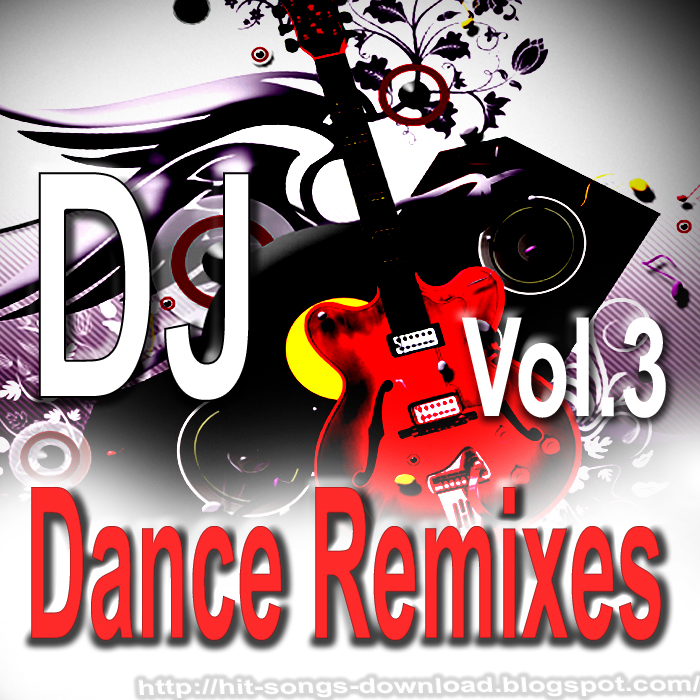
This was brought to my attention quite recently as I listened to Estiva’s remix of Only For You by Mat Zo. As you can hear, he included the melody from Lucid Dreams, which is one of Mat Zo’s other popular tracks from the same album. You can hear it at 7 seconds in:
Heard any other remixes that do the same thing? Let me know in the comments!
9. Keep it SimilarA remix doesn’t have to be incredibly contrasted to the original. Sometimes you might just want to add a little extra to the original, or expand on ideas.
For example, you’ll often hear remixes where the artist has changed just the bassline and drums, but kept the overall vibe of the song. This is the case in What So Not’s remix of ‘Major Lazer – Get Free’:
This is the case in What So Not’s remix of ‘Major Lazer – Get Free’:
This doesn’t work for every remix, but sometimes it’s exactly what’s needed. Don’t be afraid to keep it similar and add a slight touch.
10. Use Parts of the Original TrackUsing parts of the original track for fills and transitions is a great way to spice up your remix.
For example, you could take 1 bar of the original, stick it at the end of a 16-bar phrase in your remix, automate some phaser and filters to create an awesome transitional effect. There are many other ways to use the original audio, so get creative!
Oh, you want some more ideas?
- Pitch shift syllables or note stabs from the original to use in build-ups.
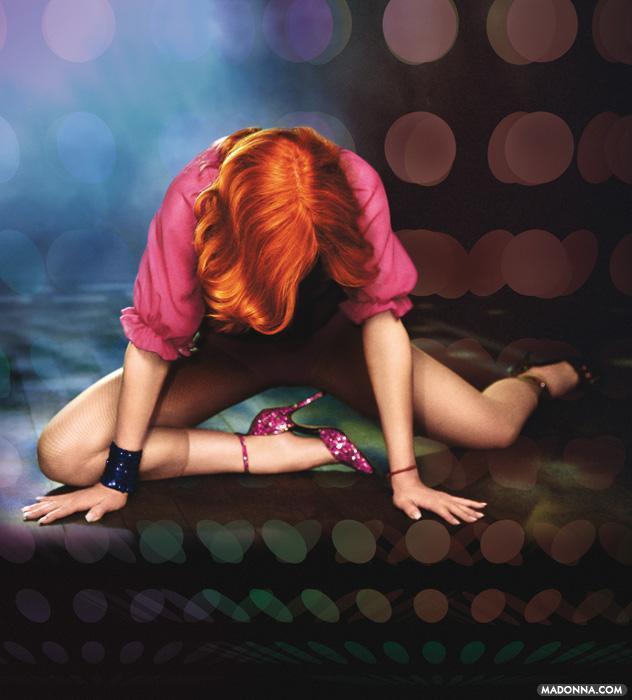
- Reverse bass and synth sounds from the original to add complexity and flavor.
- Sample drum sounds from the original to add another layer of familiarity.
Want to impress the listener? Get creative with stems! You can make stems your own with enough processing. Reverse and chop up acapellas, apply heavy distortion to bass sounds, the possibilities are endless.
Warping and time-stretching options are fun to play with in your DAW.A few ideas to get you started…
- Use parts of the bass stem(s) to fill in your bassline groove.
- Chop, loop and reverse slices of the original vocal to create your own melodies and effects
- Chop one note from an instrument stem, put it into a sampler, then process it to create something that’s new yet familiar.
- Add phasing, reverb, and filtering to the main melody stem in parts of your song to tease the listener.
- Apply reverb, delay, and distortion to FX stems to significantly change their sound.

If you’re in Ableton Live, check out some of these creative tips which can be applied to processing and mangling.
12. Treat it as an OriginalSometimes we get too involved in the concept of “remixing” that we forget remixing requires originality to actually work. I find it helpful to think of a remix as an original track. This is easier when you’re not familiar with the original track, and less likely to copy its style.
Sometimes, it can even be fun to take an existing original and incorporate a few of the main stems from a remix pack in. This works particularly well when you’re in a creative rut.
13. Create Your Own MelodyCreating your own chord progression or melody in a remix offers yet another level of originality and can often be a tasteful twist. Take the Teqq Remix of Tritonal’s “Now or Never” for example.
Listen to the original:
Listen to the remix:
Tip: A great way to create a remix that’s unique and create is to start the remix without listening to the original. This will force you to reinterpret the original stems, creating something that varies from the original. It’ll take a bit more work to get started, but it can yield fantastic results.
Read: The Ultimate Guide to Writing Better and More Memorable Melodies
14. CollaborateI can’t overemphasize the importance of collaboration. Not only is it ultra fun, but you learn a lot about how other people work and often end up in a more motivated and creative state than you would working by yourself.
Collaborating on a remix is just as fun, if not more fun than collaborating on an original. You’ll both have different opinions on the original track, and you’ll both come up with different ideas.
15. Keep the Original BreakdownProducing a remix doesn’t mean you have to change everything. If it’s bootleg, you may be forced to change the drop, but there’s nothing wrong with leaving the breakdown how it is.
The same applies with an official remix, if the original breakdown works well and flows with your remix, then leaving it in isn’t a sign of laziness or incompetence, it’s just an artistic decision.
Listen to any popular mashup and you’ll see how a breakdown can be extracted from its original surroundings and still work effectively.
16. Use What’s NeededI once downloaded stems for a remix competition (that I never finished) and ended up with a 1GB file containing WAV files for every single track. There was no way I was going to use everything.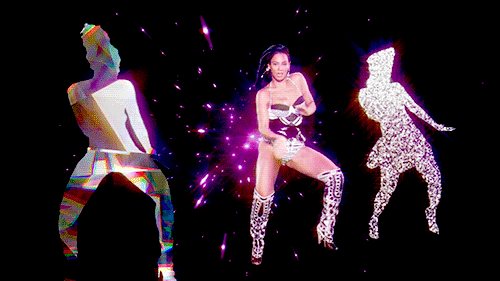
Just because you’ve been gifted with an abundance of audio and MIDI files it doesn’t mean you have to use all of them. Take what’s necessary and build your remix on top.
17. Train Your EarsOften you won’t get any MIDI files in a remix pack, for some people this can be a big problem as they aren’t confident in their ability to work out notation from audio and while some DAWs have audio to MIDI conversion, it’s well worth learning to transcribe yourself.
A tuner device can be helpful while you learn.The best way to do this is to practice; remake a melody every day. You could also check out the music theory ear training exercises here.
This also helps with Tip #13. If your ears aren’t primed then you’ll have a much harder time creating your own melody underneath an acapella or something else. Learning music theory is important as well.
Tip: It helps to know the key of the original track. Try to find the key online, or use a software such as Mixed in Key to determine the key of the original.
When creating a remix, it’s essential that it adds to original.
A great way to do this is to add your musical signature to the track. This helps add character to the remix, making it stand out amongst all others.
Further, having your own musical signature is a great way to give the listener a sense of cohesion among all your tracks, making them more likely to remember you and your music.
Not sure what I mean? Learn about how Pharrell Williams always has the same intro on all his songs.
19. Add a Second Hook to Your RemixDoes the main idea in the original track not do it for you? Too weak? Too boring?
Why not add a second hook?
Jaytech’s remix of Blood Groove and Kiki’s progressive masterpiece known as Mirage features a memorable vocal chop in addition to the serene chord progression from the original.
The original:
Jaytech’s remix with the vocal hook:
20. Make an Alternative MixEvery now and then you’ll come across a remix project where you’ve got too many ideas. While it can be fun to try and incorporate 20 different ideas into one track, it typically doesn’t turn out great.
My suggestion? Make an alternative mix.
If you’ve been contracted a remix then send the label both and ask for their opinion (worst-case scenario is they don’t want it and you keep it as a private remix) You can also save the extra ideas in a folder and use them in any original productions.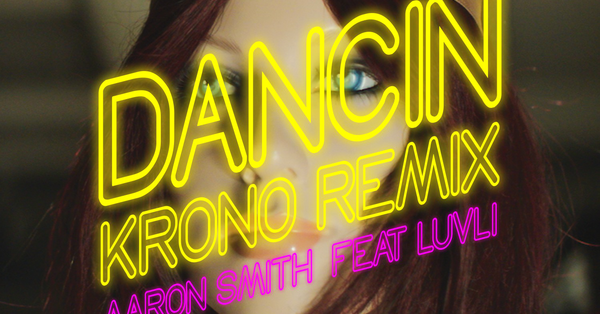
Additionally, remixes are a great opportunity to flex your ‘producer muscles’, so if you have too many ideas, you can create a different verse or chorus in each section, as long as the overall progression of the remix feels natural.
Note: this can also be applied to original tracks if you have too many ideas.
21. Ask for a DeadlineWhenever I get contracted to do a remix this is the first thing I ask for. Deadlines help you stay motivated and finish tracks.
Remix competitions have deadlines by default, and picking one that ends fairly soon is a great way to get back into gear (I often do this if I’m stuck in a rut with production to test myself and see how fast I can work). If you choose a remix competition that ends in 60 days then you’re less likely to feel driven and pressured to finish the track.
Wrapping it UpThis isn’t an all-encompassing guide to remixing (more on this soon), it’s simply a collection of tips that I and others use.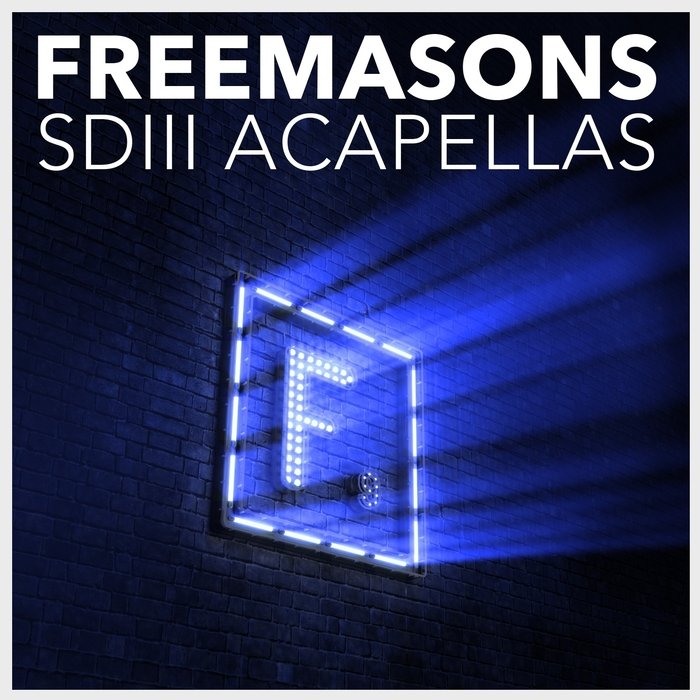 Remixes should be enjoyable, they shouldn’t take months, and you should aim to be creative. Next time you do a remix, why not use a few of these tips?
Remixes should be enjoyable, they shouldn’t take months, and you should aim to be creative. Next time you do a remix, why not use a few of these tips?
Learning how to make electronic music is hard.
There are tons of mistakes to be made, hundreds of YouTube tutorials telling you the right and wrong way to do things…
It’s confusing.
If you want to master the fundamentals of electronic music production and remixing, then I’ve put together a FREE PDF guide. You’ll learn everything, from the basics of remixing, to making your very own original.
How to Remix a Song The Complete Beginners Guide 2021
Electronic music’s evolution stems from sampling, remixing and re-editing. Stemming from DJs always wanting longer records with longer percussive passages. The phenomenon came about in both Hip Hop & House at the same time… A collective DJ discovery, fueled by the dancefloor. It was the ’70s, people were wild, the edit was built solely around the energy on the dancefloor, the dancefloor was hungry for it.
Regardless of the genre, style or taste, every DJ is working towards the X Factor, every single time the play. That factor that keeps you coming back to how damn good your night was! You remember the tracks played, the people that were there with you.
The X factor is defined by the vibe & the energy, a culmination of the music, the pace, the lighting & the crowd. When this synergy locks in, it’s amazing & everyone knows. Its as though the songs choose themselves through you, the DJ is one with the crowd, collective energy lays down the vibe and you never leave the dancefloor, and you remember exactly what it felt like when you were there…
It was the Pioneer Francis Grasso, was DJing at the Sanctuary in New York in the early 70s, he had discovered that percussion-heavy records and breaks (everything drops out leaving just the drums) were phenomenally effective on the dance floor. From here DJs like David Mancuso or Steve D’Acquisto and the pioneers who followed in the ’80s, Frankie knuckles & Larry Levan, all groundbreaking artists that all sought out longer records with percussive breaks and vamps. (repetitive instrumental sections that came before the loops we know today).
(repetitive instrumental sections that came before the loops we know today).
Hip Hop Dj’s have known the power of the break from the start. Juggling the break with a simple sole purpose; they never wanted to give anyone an excuse to leave the dance floor. DJs began making their own reel-to-reel edits to mimic this process, to create long, danceable grooves. Edits were often simply neater cut and paste versions of what they would do live with two records.
The remix was born from the same necessity: DJs needed and dancers wanted records that were specifically re-tooled for the dance floor. A collective chase for that X Factor.
Remixes can be a great way to sink your teeth into production. A remix can be easier than starting your own tracks for scratch. You have a solid ground to launch off and a good direction to move in. Doing a remix could also be one way you could quickly rise above the crowd and get recognition is through bootlegs and remixes. You can take any track and make your own spin on it.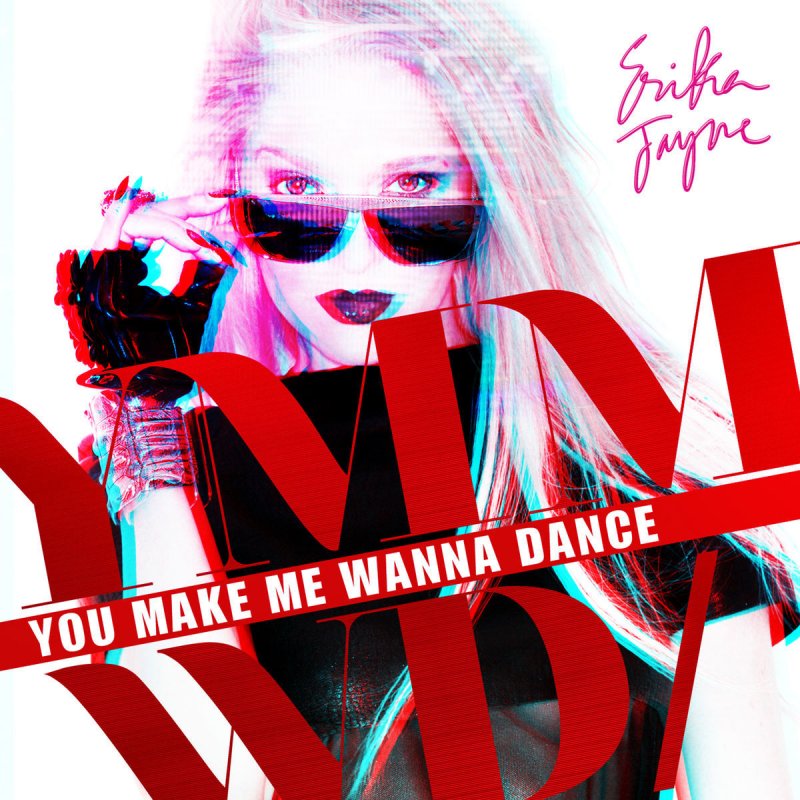 By taking popular dance tracks and adding your own spin you can quickly get your sound and vibe out to the world.
By taking popular dance tracks and adding your own spin you can quickly get your sound and vibe out to the world.
Lets clear up the terms before we get into how to remix a song…
A bootleg, remix, and re-edit are different forms of remixing someone else’s song. From sampled vinyl to modern day stems.
A remix is when a producer has access to the original recordings from a song, including the separate audio tracks, enabling them to either treat or entirely replace parts in isolation – like the bass line or the percussion. An official remix is when the original artist/record label paid you or requested you to make it. Remixes can be called a flip as well.
The term Flip comes from the A Side B Side of records, with the B Side being the lesser focus of the release, and called the Flipside.
VIP Mixes are done by the original artist, it means Variation In Production…
A re-edit, on the other hand, is made from the finished full recording of a song rather than the individual audio parts. This vastly reduces the creative license available to a producer. They can’t replace the bass or put effects on just the vocal as they only have the entire song to play with. Instead, edits are about re-arrangement with the aim of making a record more dancefloor friendly. Common things to do when making a re-edit include:
This vastly reduces the creative license available to a producer. They can’t replace the bass or put effects on just the vocal as they only have the entire song to play with. Instead, edits are about re-arrangement with the aim of making a record more dancefloor friendly. Common things to do when making a re-edit include:
- cutting and pasting parts
- extending intros and breakdowns
- removing some sections, shrinking or elongating others
And, a bootleg is done without the explicit permission of the artist, & is an unofficial (and often illegal) version of a remix. The remixer didn’t ask the original artist for consent to do it.
Like “bootleg whiskey” in the prohibition times. A bootleg remix generally uses the stereo master track and or acapella of the track. These are more common and usually made by DJs who want an alternative version of a song to play at their show. From samples from a song or the entire song and is often a very underground “Edit”. Bootlegs fun and a great way to sink your teeth into production and your local scene.
Bootlegs fun and a great way to sink your teeth into production and your local scene.
It is illegal to sell a bootleg. Technically, you are not even meant to upload or share it… but lots of DJs do.
Re-edits have been as important in the development of dance music as remixes, and many of our favorite tunes are simply reinterpretations of older music, whether through a 2 bar sample loop or a new rework of an entire song; dance music has always greedily cannibalized its past.
Boundaries are sometimes a little blurred generally a remix is a new interpretation created from the individual parts of a song, whereas a re-edit is created from the entire song. And until someone comes up with a better idea, when it comes to anything that doesn’t neatly fit into either category, we’re just using the term ‘re-work’, unless of course its a bootleg!
If you are wondering how to remix a song, like all production methods, there are many ways to go about it.
Here are steps & methods that have worked for producers;
The first step is to find/and use a song that you like.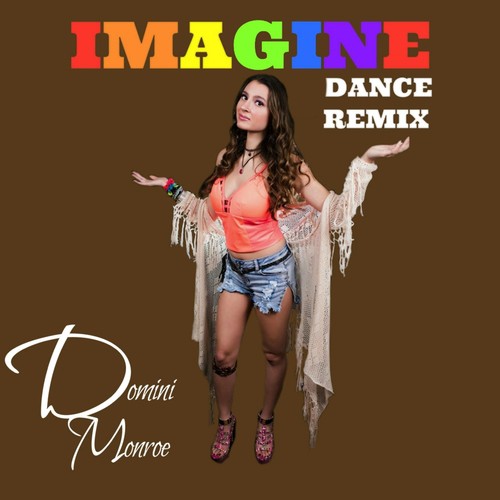 Liking the source material will do wonders for your inspiration.
Liking the source material will do wonders for your inspiration.
If you are making a remix (Contests are a good place to start making official remix) you’ll need to source your source material which could stems an official remix will generally be in stems.
If you are editing a song, you sample it from a record/or quality source.. CD, WAV, etc. You want your source material to be of as high quality as possible.
Native instruments stems are a good place to get a whole track in stems. Any of your producer friends will happily give you there stems.
Splice.com is a great online resource for music producers. They are a free service that has a cloud service so you can back up all of your work.
Splice also run competitions, it is free to have an account with them you can subscribe & have access to samples, you don’t have too.
These are quite good resources for official competitions:
- SIKO
- METAPOP
- remixpacks.ru
- SPINNIN’ RECORDS
- https://remixcomps.
 io/
io/ - KREASOUND
Now that you have the source material from the song you want to remix you’ll need to find out the Key & BPM (if it’s not provided).
You can check Beatport, use Mixed In Key , if you are good with music theory you could transpose it yourself, if you have a mac then Keyfinder is open source, free and super effective.
Load your stems into your daw and make 100% sure they are all lined up correctly. I use Ableton & do this in the arrangement view.
Listen to your source material, firstly in full, use this time to get a feel for your song and ask yourself what it needs.
Write it down with a pen & paper. This is going to be the plan of action for your remix.
Decide what elements/sounds you might want to bring into the track & choose the direction
you would like to go in.
Write it down and stick to the plan. If you find yourself lost during the process refer back to your plan, having one will help you finish.
Stuck for sounds to bring to your remix?
Freesounds.com is a really REALLY amazing place to get sounds that are inspiring, copyright free & freeeeeeee!
The next step , listen to your my source material stem by stem. (Pen & paper time again!) I also create locators at points that inspire me
and also where there is space for different and new elements.
Once you have found the inspirational elements you know you want to use >>>>>>> its Chop and Slice time!
Keep what inspires you. then you could chop the original vocals to create a sampled lead sound, sample the original synths and include instances of them as transitions, or
cut out percussion sounds and create a different groove with them. Try playing with warp modes to find a new pitch that fits well, you could add texture, grain & stutters
with the warp modes or try reversing sounds to add complexity.
Some people like to heavily process stems to drastically change their sound, all of these production tools are simple, powerful and capable of sparking a track out of a loop.
Delete all the material you are not going to use, keeping your arrangement, clean will help you to move quickly and know where things are.
******* Colour coding and renaming appropriately will keep things simple and clear “rolling_AD252” to “percussion”.
Use this shortcut to speed renaming up.
If you are renaming loads of clips, this guide will help you do it quickly.
And, now you’re at the point to start your spin on the song & you can start building your new arrangement!
You can add track locators in the arrangement view of your project to help keep your sections be more organised and navigate between sections.
The play button on locators is useful for quickly jumping around your project & laying out your arrangement.
As with all production, there are a million ways to skin a cat you really can make a remix in so many ways.
Ableton offers a way to bounce your parts back to the session view or sketchpad.
Meaning you aren’t tied to the arrangement view, the better place to start in this scenario.
You will be able to take advantage of the flexibility that the session view offers.
Here is how;
1. Place locators at all of the points where your song changes. – This method won’t work without locators.
2. Highlight a section
3. Right click >> Consolidate To Scene
Your parts will be bounced back to the session view, repeat for all sections.
And, you’ll have playable scenes in the session view.
Now to work toward finishing…
As soon as you have your ideas, layout your arrangement! As in before you leave your creative session…
This will get your head out of loops and working toward finishing.
Don’t fight against the source material, its a remix… You can chop n mangle as much as you want!
Here are a couple of ways you could do so…
- Use parts of the bass stem(s) to fill in your bassline groove.
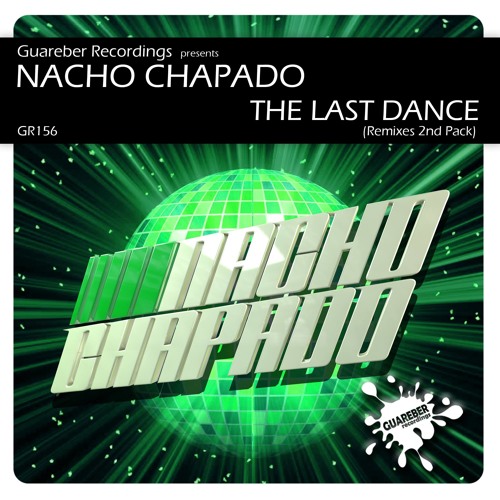
- Chop, loop and reverse slices of the original vocal to create your own melodies and effects
- Chop one note from an instrument stem, put it into a sampler, then process it to create something that’s new yet familiar.
- Add phasing, reverb, and filtering to the main melody stem in parts of your song to tease the listener.
- Apply reverb, delay, and distortion to FX stems to significantly change their sound.
Don’t be scared to use parts of the original song…
Using parts of the original track for fills and transitions can add some more flavor.
You could take 1 bar of the original, stick it at the end of a 16-bar phrase in your remix, automate some phaser and filters to create an awesome transitional effect…
- Pitch shift syllables or note stabs from the original to use in build-ups.
- Reverse bass and synth sounds from the original to add complexity and flavor.
- Sample drum sounds from the original to add another layer of familiarity.

Aaaaaaaaand, ask for a deadline!
– the best & most assured way to get your remix finished!
From here it’s a mixing & mastering game, very large beasts, best left for another day.
The best piece of advice anyone can give is…. ‘RINSE & REPEAT’
The more you make, the easier you’ll create!
How I learned to write dance music and started releasing on labels — Music on DTF
A big story about finding yourself in creativity. With pictures and music.
14307 views
Hi, I'm Muchkin. I write music. I make money with soundtracks for indie games, and for my soul and career I also make tracks in the genre of melodic house and techno. About how I came to composing, I wrote in a recent text. Now let me tell you about my path in dance music.
Screenshot of my latest project so far
Beginning
Somewhere in the ninth grade, I first heard Prodigy - Voodoo People (Pendulum Remix) as part of a mix from DJ Stroitel. I got crazy and started to get interested in drum and bass. I listened to Pendulum, Noisia, Spor, danced drum and bass dance, which we called drumstep.
I got crazy and started to get interested in drum and bass. I listened to Pendulum, Noisia, Spor, danced drum and bass dance, which we called drumstep.
Then I thought that I also want to write the same energetic cool music with rich drum parts. I had no idea how it was done, and the search led me first to some kind of MIDI editor, in which I made a couple of songs. And then I found FL Studio, a sequencer that I've been using for over a decade.
The first tracks were awful.
I shared them under a shameful pseudonym on PromoDJ, in an active community of fellow beginners. We intelligently criticized each other's tracks, not knowing anything at all about how music is created. But it's always like that when you start.
I once read the idea that you need to make the first 100 songs as quickly as possible, because after them normal music will follow. In my experience, yes, something like this is
Toward the end of school, a dream began to form in me: I will learn how to make cool music for the university, and by the end of the fourth year I will become, if not a world star, then certainly a professional and respected music producer (a person who earns money by creating and performing electronic music ).
University
In fact, for four years at university, I basically did only three things: studied (albeit well), played video games and suffered from fears and anxieties. Despite the fact that the dream still lived somewhere on the border of consciousness, and I considered myself a music producer, writing tracks faded into the background.
It wasn't because I was lazy or because I didn't want to make music. Just because I thought of a great success in advance, creativity turned into a hard and painful task. High anxiety, disorders, traumas, and just the peculiarities of the psyche (which I realized only ten years later thanks to psychotherapy) exacerbated the situation.
For example, I wrote this track for a whole year and spent more than hundred hours on it . That was the pace at which I produced finished works at that time.
Funny story. Born in Space found some cunning guy on PromoDJ and wrote me, they say, let's release it on my label. I went nuts from the word "label" and agreed. We even signed some kind of contract through the Proton system. After that, the man disappeared. Until now, the composition can be found on streaming services - he released it ten times, probably, and all under different "labels".
I went nuts from the word "label" and agreed. We even signed some kind of contract through the Proton system. After that, the man disappeared. Until now, the composition can be found on streaming services - he released it ten times, probably, and all under different "labels".
I didn't make a dime from it, of course. I suspect that he is also
Among my other works during this time, one can single out this psychedelic “neurofunk”, in which everything that is possible is not in tonality. When I wrote it, I did not yet know what tonality was.
This was supposed to be an intro for my friend's YouTube show, but it never launched.
At the university, I wrote little music, but this does not mean that I did not develop creatively. I listened and analyzed bass genres a lot and sometimes through suffering I made tracks. Many did not finish. So there was progress, but very slow.
This composition also took about a year and 60-80 hours of work.
My music from this period seems to meet some minimal requirements of the genres (the structure is readable, the sounds are more or less intelligible, the kick and snare give some kind of energy, sometimes there is even a sub-bass), but they are crooked, poorly thought out and uninteresting .
I just used samples, notes and instruments that seemed appropriate and didn't think about the big picture, melody or atmosphere. And, I suspect, for the better. If I had been worried about this as well, then anxiety would have completely crushed me.
By the way, my suffering also had some advantages. From the very beginning of working in FL Studio, I decided that I needed to create all the presets for the synths myself, and so I did. By the time I received my diploma, I had a good knowledge of the standard synths of the program and even a small library of presets.
By the way, about the diploma: I wrote this experimental composition dedicated to a headache closer to the defense, which is symbolic.
Work
After my bachelor's degree, I went to the master's program and at the same time started looking for a job. For a year and a half, I was doing all sorts of small jobs (once I even made the whole foley for a short film). I didn’t do much music, although I was able to complete a couple of projects.
For example, this future beats track inspired by Ivy Lab and Noisia Radio selections.
And an old school drum and bass remix for Dorn (there was a PromoDJ contest).
I was looking for ways to make money on music: I applied to local game and recording studios, I tried my luck in creating beats and stock tracks. In vain. As I studied the market and read the stories of more successful producers, an unbearable, terrible thought formed in my head.
To achieve something, you have to work very hard
That explained a lot.
At the beginning of 2017, I was accepted to DTF. Since childhood, I loved games, I read LKI, the Land of Games and Igromania, so I was very happy with this opportunity.
Since childhood, I loved games, I read LKI, the Land of Games and Igromania, so I was very happy with this opportunity.
I was part of the editorial staff for almost two years. At this time it was difficult to find the strength and time for music. I watched tutorials, analyzed other people's tracks, replenished my database of samples and presets, but completed projects during this time can be counted on the fingers of one hand.
Weird downtempo project - time.
Dubstep with the voice of YouTuber Jacksepticeye - two.
Gloomy base house - three.
Drum and bass, started back in 2016, four.
I tried to send each of these tracks to labels, but they were not taken anywhere. I was surprised: how is it that they have everything. And powerful basses, and cool drums, even some interesting effects. Isn't that enough?
Oh, how little I understood.
Composing
In the spring of 2019, I started building a career as an indie game composer.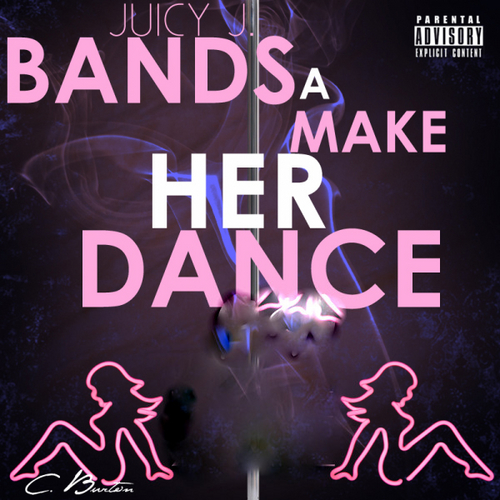 A few months later, this occupation even began to bring in some money and soon became the main one for me. (You can read about this path here.)
A few months later, this occupation even began to bring in some money and soon became the main one for me. (You can read about this path here.)
I found a way to make money with music and immersed myself in creativity. A little bit not the direction that I dreamed of, but still it was progress. Working on the soundtracks, I learned to feel the music better, learned new techniques and added to my own libraries even more.
As for dance tracks, at the end of 2019, aggressive and fast base house was popular, and I tried to sit on this hype train.
But no labels took the track, so I released it myself through distributor DistroKid. It was my first "adult" release - the one that appeared on streaming services. So far, I have earned exactly $0.03 on it. That's 17 auditions.
Back in the beginning of 2020, I made time for the LEAVEMEALONE halftime track.
The flops over the past couple of years made me wonder: what is wrong with my music? Why doesn't anyone want to take it? Reflection and reflection led me to an important conclusion: in the first place, I do not make the music that I really want.
I became interested in making music thanks to drum and bass, then I started listening to dubstep and electro house, and for some reason I always felt that these genres were what I needed to work on. But as soon as I listened to myself a little (which I had never done before), it turned out that I had nothing to express through bass music.
Therefore, I spent the following months looking for genres that would most accurately reflect my inner state. They were melodic house and techno.
Brute force
Since April 2020, I have decided to get into dance music properly. Since I used to be able to create compositions only through force, I came up with a challenge for myself: to finish one track every month.
The logic was like this. By forcing myself to work on dance compositions month after month, sooner or later I had to develop all the necessary skills needed to create cool music.
I was going to basically brute force my creative powers
The first track turned out to be clumsy. The mixing is murky, there is not much development, both drops are arranged as if it were a summer banger, although a soulful melodic techno was conceived. But for starters, it will.
The mixing is murky, there is not much development, both drops are arranged as if it were a summer banger, although a soulful melodic techno was conceived. But for starters, it will.
This track (and several others) I released again via DistroKid. Even tried to buy ads for him through Facebook. There were still few auditions (39 to date), but I was resentful of the label system after so many rejections and was determined to make a name for myself.
The next composition in May, Pasturage, was much softer. Birds, forest, nice sound design and summer rain atmosphere.
For this track, I also purchased advertising. This time I set up the ad better and invested more money, so the output was more tangible. Now he has 138 plays.
The June track Arcane turned out to be mysterious and attractive, like a Celtic forest. Hence the name.
I did not commission advertising for him, because the determination to promote myself in the music industry began to fade.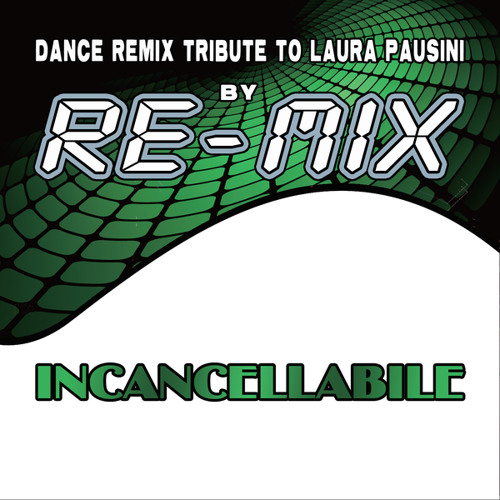 I didn’t pour so much money into advertising tracks, but there was no more extra money.
I didn’t pour so much money into advertising tracks, but there was no more extra money.
The conclusion was that you can break through on your own only in two cases: if you have a lot of money for advertising (I didn’t), or if you know how to do cool PR in social networks (I didn’t know how). So I started looking towards
labels again.
Arcane was not taken to the labels (I did not even hope), but they took Autarca - the July track. Here's a snippet of it, and you can listen to it in full here.
It was released as a compilation on the sub-label of a small St. Petersburg publishing house Polyptych. I knew perfectly well that this would not bring me any money or popularity, but I signed the contract anyway. You have to start somewhere.
The next track was a bit hooligan Help a Robot. I didn't send it anywhere, because big labels wouldn't take it, and it was long and tedious to look for small labels with such music. How do you even google them? "Labels with frivolous electro-house"?
How do you even google them? "Labels with frivolous electro-house"?
In autumn I decided to make a three-track mini-album. For some reason it seemed to me that labels were more willing to take EPs than singles.
Even by this moment I had heard a lot of music in the selected genres and realized that in melodic house and techno, few people make tracks shorter than six minutes. So from now on, all my new compositions slowly fade in and out.
In general, the music has become less hasty and more conducive to immersion and thoughtful listening
As you might expect, my plan to boost my chances with labels with the EP didn't work out very well. The release was eventually taken to the same Polyptych Limited (it will be released on July 5), but I was hoping for something bigger.
In December I finished the new track Rewired and decided to take a break. Working non-stop for nine months (and I also did soundtracks) without tangible results led to the fact that I just burned out.
Rest helped me rethink my priorities and figure out which way to go. I stopped caring too much about labels and started focusing more on creativity and self-expression. Plus, psychotherapy helped (and still helps) to listen to yourself better.
Rewired was included in the compilation for the Moscow label ONESUN (will be released sort of like in the summer).
Opening
I wrote the next composition at a more relaxed pace: burnout forced me to abandon the "one track per month" mode. Simultaneously with the work on the track, I was doing research. He carefully studied music in the chosen genres, pestered successful producers with questions, whom he could reach.
The result was the biggest takeaway of all time: major labels need unique music first and foremost. One that has not yet been
Within the genre, of course, although the boundaries between melodic house and techno are blurred.
How to achieve uniqueness? For me, the answer is simple: it comes from the uniqueness of the psyche. If you learn to listen well and express yourself adequately, then creativity will be unique. Therefore, when creating Bird Law in January 2020, I tried to listen as often as possible to what melodies, sounds, effects and just decisions resonate with me.
This track doesn't just meet some technical requirements, it's undeniably my . For example, the title is taken from a comic book that I really like.
It's the law
And the theme of birds in it is not only because of the name, but also because these animals (but not all) touch me and my wife very much. And also partly a track about the love that I feel for my wife, and this has something in common with the comic book. In general, a warm work about good things. The ones in me.
I don't know how noticeable this is to the outside listener, but I see a massive improvement over the previous compositions. He was even taken to a more serious label - the Italian Natura Viva. They promised to release it as part of a compilation. I don't know when exactly: for some reason, labels rarely notify me about such things, and I myself don't really care. I'm more focused on future works.
He was even taken to a more serious label - the Italian Natura Viva. They promised to release it as part of a compilation. I don't know when exactly: for some reason, labels rarely notify me about such things, and I myself don't really care. I'm more focused on future works.
The last track so far is called You're Not What Your Mind Tells You. It's about my many battles with my own brain. It is a little sad, but with a light undertone, because no matter how scary the battles are, there is always a possibility to win. At least I can.
The other day I signed him to the Belgian label Sound Avenue. It will first be released exclusively on Spotify to try and push it into the platform's playlists, and will be released as part of a sub-label compilation in August.
After You're Not What Your Mind Tells You, I again rethought my creative process. Now I try to treat music less as a series of separate projects and more just as a field for experiments, from which cool completed projects will grow. Let's see where this takes me.
Let's see where this takes me.
Such things. Thanks for reading. By the way, I will soon launch a course on creating electronic music from scratch. If interested, you can read the details here.
If you like my music, you can subscribe to Soundcloud, YouTube or Spotify. All my future tracks will appear there as well. Also here are my social networks: Facebook, Twitter, Instagram, Twitch.
remix – contexts and usage examples in English with translation into Russian
We have to remix it. We need to remix it.
A surprising lens on remix culture. An amazing perspective on remix culture.
This is this fantastic Brat Pack remix set to Lisztomania. Here is a wonderful remix of films by the group of actors Brat Pack set to the music of Lisztomania
These boys wouldn't last one bad dubstep remix of gay bar judgment. These guys wouldn't even stand one bad dubstep remix as punishment in a gay bar.
These guys wouldn't even stand one bad dubstep remix as punishment in a gay bar.
We can share, comment, remix, create, even make – all with just a few clicks. We can share information, comment, create, remix - all with just a few clicks of the mouse.
The license for these remixers assigns all of the rights to the remix back to Lucas. The agreement states that all rights to the remixes belong to Lucas.
In Photos, select Create > Video remix and select the photos and videos you want to include. In the Photos app, select Create>Video Remix and select the photos and videos you want to add.
I'm going to make an observation about the way remix culture seems to be evolving. I'm going to share with you my thoughts on how I think the remix culture is evolving.
Stage two, social remix, is really about using it to mediate people's relationships to each other. Social remixing is the use of culture as an intermediary in the relationship of people with each other.
Social remixing is the use of culture as an intermediary in the relationship of people with each other.
Select Remix it for me to instantly change its look and feel by recombining images, music, and styles. Select Remix for me to quickly change the look and feel with different images, music, and styles.
One remix is about individuals using our shared culture as a kind of language to communicate something to an audience. One remix is individuals using our common culture as a language to communicate with the audience.
Sonny Moore, better known as Skrillex, swept the traditional EDM categories, winning three awards for “Remix Recording,” “Dance Recording” and “Dance/Electronica Album.” Sonnie Moore, better known as electronic musician Skillrex, took all three "electronic" nominations - and "Best Dance Recording", "Best Remix", and "Best Dance/Electronic Album".
In the YouTube Video Editor, you can remix videos that other members of the YouTube community have uploaded under the Creative Commons license. YouTube Video Editor allows you to remix videos that others have uploaded under a Creative Commons license.
Indeed, Mickey Mouse himself, of course, as "Steamboat Willie," is a remix of the then, very dominant, very popular "Steamboat Bill" by Buster Keaton. Indeed, Mickey Mouse, in the cartoon "Steamboat Willie" is a remix of the then very common, very popular film "Steamboat Bill" shot by Buster Keaton.
So that's importantly different from the earlier videos we looked at because here, remix isn't just about an individual doing something alone in his basement; There are important differences here from the videos we've seen before because here the remix is not only the product of a single individual at home;
Hundreds of remixes came back - lots of different attempts. In response, I got hundreds of remixes - many different options.
In response, I got hundreds of remixes - many different options.
mashups, “best of”s, compilations, and remixes of other works mashups, compilations, compilations, remixes of other works;
Or there's a smaller contemporary orchestra, 12 people that remixes its own title. And there is a small ensemble of modern music - 12 people, they create a remix of their own name.
We need to respect the creator, the creator of these remixes through rights that are directly tied to them. we need to respect the creator of the work, the creator of these remixes, through respect for his rights.
Chitra basically remixes and re-titles these iconic images to tease out some of the sexual and gender politics embedded in these deeply affecting comics. Chitra creates a kind of remix and renames these traditional pictures to highlight the sexual and inter-gender themes embedded in these comics and having a profound effect.